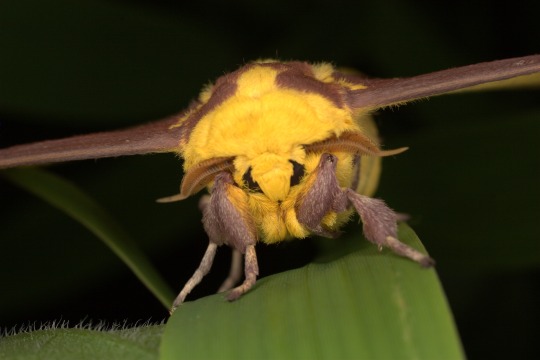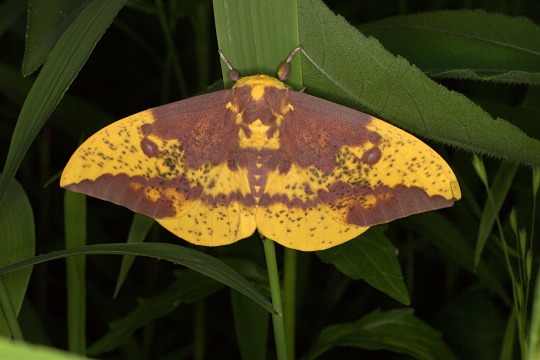By Vanessa Verdecia

The Imperial moth (Eacles imperialis) is a member of the Saturniid family, a group also known as the Giant Silkworm Moths. This specimen is one of several that was reared from eggs laid last year. The corresponding larva (caterpillar) can be seen in this 2017 blog post.
Lepidoptera (moths and butterflies) develop through a process known as complete metamorphosis. They go through four distinct stages: egg, larva, pupa, and adult. Entomologists use isofemale culture rearings to document these stages in a wide variety of different species. In isofemale cultures, wild-caught females are kept in isolation until they have laid their eggs. The resulting larvae then represent one known species derived from a single individual. This method eliminates the possibility of accidentally rearing two or more different species together.
Recording the growth and development of caterpillars is important to understanding the natural history of a species. Detailed notes tell the story of the species being reared. For example, we can document the time of year that adults are found and when eggs are laid, food preferences of the larvae, and whether adults eclose from the pupae in the Fall or overwinter until the Spring before starting the cycle all over again. Even though laboratory conditions may affect the timing of these changes, the specimens preserved still serve as vouchers to represent stages associated with each species.
The Section of Invertebrate Zoology’s Lepidoptera larval collection serves as an incredible library of associated eggs, larvae, pupae, and adult stages for many species documented through extensive isofemale culture rearings. The corresponding notes serve as a valuable resource for life history information, such as host plant preferences. Host records are important since a given species will survive on only certain types of host plants. The caterpillars of the Imperial moth will eat a variety of deciduous trees and this specimen was reared on oak. However, some species may be host specific and only survive when given the correct plant to eat.

The larvae of Imperial moth caterpillars reared last year overwintered in the pupal stage. Winter conditions were provided by storing the pupae in containers kept in the refrigerator through the winter. The containers were removed and placed at room temperature and we are now enjoying the adult Imperial moths that have been eclosing since May and June. Many images have been taken, and multiple voucher specimens were preserved to fully document this species in the museum’s reared larval collection.
Vanessa Verdecia is a collection assistant in the museum’s Invertebrate Zoology Section. Museum employees are encouraged to blog about their unique experiences and knowledge gained from working at the museum.
